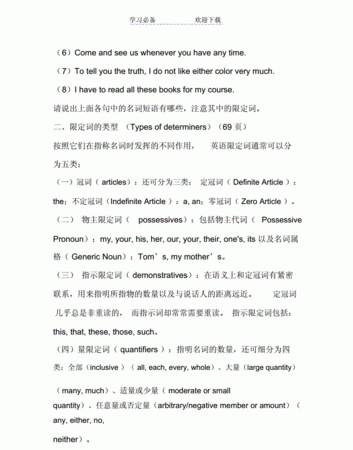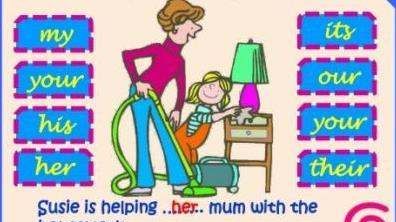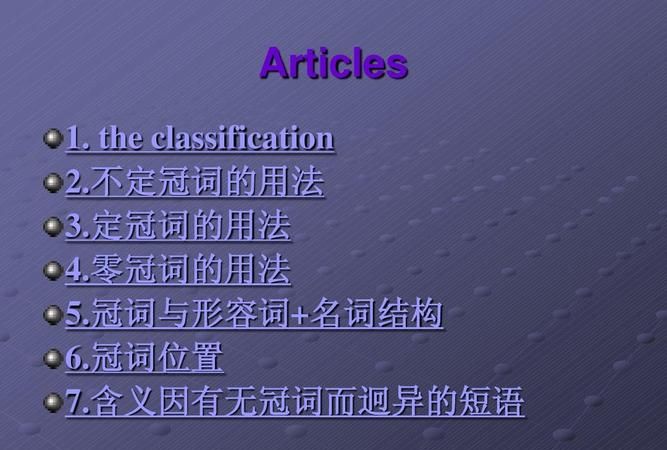本文目录
啥是前位中位后位限定词
his 是中位限定词,many 是后位限定词,而限定词遵守前-中-后的原则,所以many 不能在his的前面,所以选D

英语中限定词的位置顺序
限定词可以分为前位限定词、中位限定词和后位限定词。
一、中位限定词
定冠词、不定冠词/ this / that / these / those / my / your / Merry's / my friend's / some / any / every / each / no /
在名词中心词之前只能出现一个这样的词。
a the boy a some boy
二、前位限定词
只能出现在某些中位限定词之前
1. all, both , half
eg. all the girls, half an hour
2. 倍数词 double, twice, three times
double the sum, twice my salary, three times the space 3. 分数词 one-third, one-fifth
One-third the time
4. such, what
such a surprise! What a fine day !
前位限定词是互相排斥的,如不能说all both girls。
all such 是个例外。
个别限定词有跨类现象。如such既属于前位限定词,又可归入后位限定词。由于它只是在 such a...和such an...这样的搭配中属于前位限定词。而在与其他限定词(some, any, no, all, few, another, other, many, one, two, etc)搭配时,such则是后位限定词,一律放在上述这些限定词的后面。
三、后位限定词
接在前位限定词或中位限定词后面
1. 基数词 my three children
2. 序数词 the first day, the last day
(一般序数词,last, next, past, another, additional, further)
3. 封闭类数量词 few people
4. 开放类数量词 a large number of people
希望我能帮助你解疑释惑。

前位限定词中位限定词后位限定词是什么意思
前位限定词中位限定词后位限定词是other,放在数词之后,表示泛指,没有限定,意思是“另外的……个”。此时的other主要起区别作用,也就是使它后面所修饰的人或事物,与前面提及的相同人或事物区别开来。

注意事项:
限定词放在名词前,用来表述名词的范围等属性,比如:the表示“特定”,the book指的一定是某本特定的书;a/an表示“非特定”。
一般泛指,a book那就是随便拿过来一本书即可;some 表示“一部分”, some books指一些书;all表示整体,all books就是指所有的书。限定词的摆放,有三个位置,不可颠倒。
限定词是放在名词前,用来表述名词的范围等属性的词;限定词的摆放,有前位中位后位三个位置,不可颠倒;但三个位置的限定词并不同时出现,一般名词短语只有一个限定词。
前位中位后位限定词是按什么分类的
前位限定词:
all both half...
double twice three times...one third two fifths....
what such a/an
中位限定词:
a/an the zero
this that these those
my your Merry's my friend's....
some any no every each either neither enough
what(ever) which(ever) ....whose
后位限定词:
one two three.......
first second third .....
next last other another.....
many much (a) few (a) little fewer less..........
several plenty of a lot of a large/small amount of.....
望采纳

以上就是关于限定词可以前后后,啥是前位中位后位限定词的全部内容,以及限定词可以前后后吗 的相关内容,希望能够帮到您。

